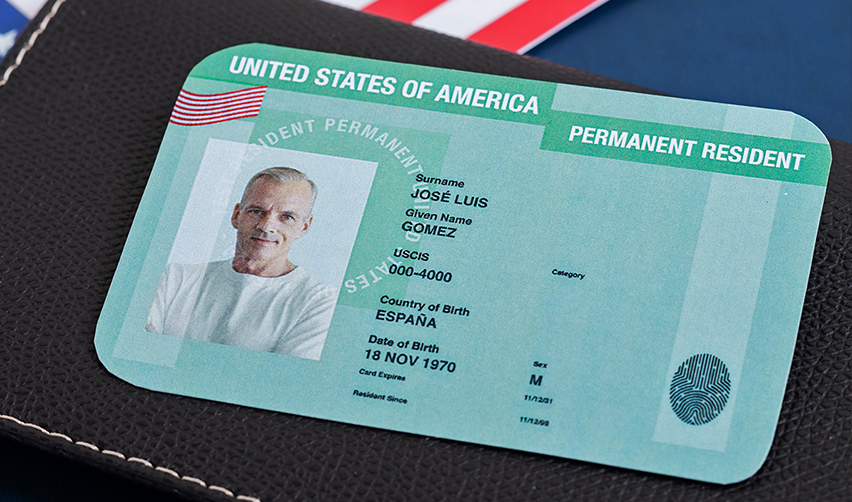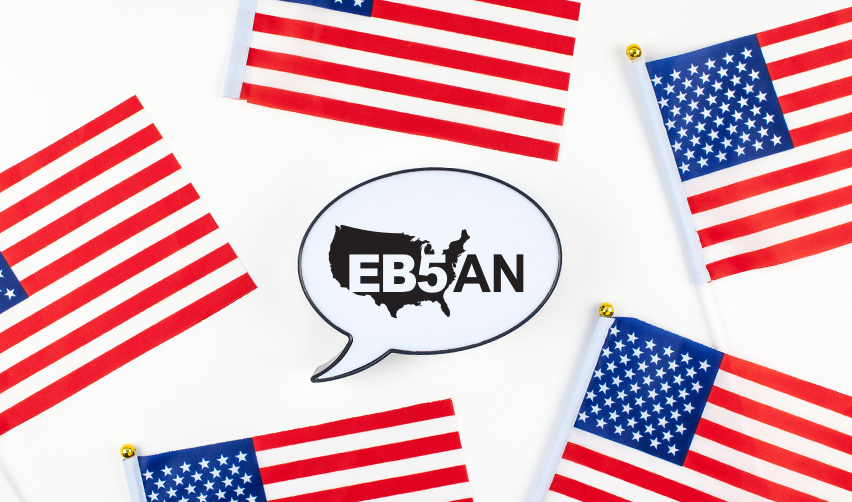There are many investment decisions that EB5 applicants can make to increase their chances of immigrating successfully. One of the best ways that EB5 immigrant investors reduce risks is by investing in targeted employment area (TEA) projects. This allows immigrant investors to access a reduced minimum investment amount of $800,000.

TEAs are either high-unemployment or rural areas that can especially benefit from EB-5 investment funding.
All About Rural EB-5 Projects
Rural TEA Projects Create Jobs and Strengthen Rural Economies
Reducing Unemployment
Rural Projects: Your Ticket to an EB-5 Green Card
Rural EB-5 Projects Offer Exclusive Immigration Benefits
Applying for a Green Card through a Rural TEA project
The Role of Regional Centers in the EB-5 Program
Rural EB5 TEA Projects: Your Questions Answered
All About Rural EB-5 Projects
Criteria for a Rural Project
To qualify as a rural area, an area must have no more than 20,000 residents; not border a municipality with a population of 20,000 or more; and not be located within outer boundary of a metropolitan statistical area—all according to the most recent decennial census.
Get U.S. Green Cards in Months Through a Rural Project

The EB-5 program now offers appealing incentives to EB-5 applicants who invest in rural area projects. These incentives were introduced by the EB-5 Reform and Integrity Act of 2022 (the RIA). Under the RIA, EB-5 foreign investors in a rural investment can have USCIS process petitions faster. In addition, foreign investors from countries with a backlog of EB-5 applications can potentially avoid years of additional wait times.
Thanks to priority processing for rural projects, many investors have recently been approved for U.S. Green Cards in a matter of months along with their family members. For example, one investor in EB5AN’s Twin Lakes project received approval for Form I-526E in only 9.5 months through the project’s rural priority processing.
EB-5 Investors Are Choosing Rural Projects
Besides benefitting EB-5 visa applicants by allowing them to get U.S. Green Cards faster, rural projects also inject funding into the areas that need it most, promoting growth and job creation.
As the incentives for rural EB-5 project investment attract more EB-5 applicants—especially from China and India—we expect increased demand for EB-5 funding in rural communities, which will strengthen more local economies. An EB-5 regional center sponsor who works with a rural project will likely experience more investor demand.
We encourage both EB-5 investors and real estate developers to look into the many benefits of rural projects. This article will answer common questions about this already-succesful EB-5 project category.
Rural TEA Projects Create Jobs and Strengthen Rural Economies

EB-5 investment funding for real estate projects in a rural area provides numerous benefits to rural communities. This type of funding is often available at below-market rates, making it a cost-effective solution for real estate developers. Developers currently face high interest rates and often need a cheaper, non-traditional source of funding through EB-5 regional centers and a new commercial enterprise.
Reducing Unemployment

One of the primary benefits of an EB-5 commercial enterprise located in a rural area is the creation of jobs. As a requirement for the program, each EB-5 investment must create at least 10 full-time jobs for U.S. workers. This infusion of job creation (both direct, indirect and induced jobs) supports the local economy. It also provides a much-needed boost for communities that may be struggling with unemployment and underemployment compared to the national average unemployment rate.
This strengthens the labor force employment measure, and direct jobs establish positive economic indicators.
Rural Communities Benefit From EB-5 Funding
Furthermore, EB-5 investment funding stimulates growth in rural areas. New commercial enterprise developments can lead to increased property values, which in themselves stimulate economic growth in turn generate higher tax revenues for the community. This additional income can be used to improve local infrastructure, schools, and public services, further enhancing the overall quality of life for residents.
Rural Projects: Your Ticket to an EB-5 Green Card

EB-5 investors in rural projects enjoy several unique advantages that are unprecedented in the EB-5 visa program. We now summarize some of the benefits of investing in a rural TEA project.
Set-Aside EB-5 Visas
EB-5 investors from high demand countries with visa backlogs—currently, China and India—face extended waiting periods for their EB-5 visas. Investors from backlogged countries often have to wait for several additional years for their visas.
The RIA offers a unique solution for EB-5 investors from countries with visa backlogs. Each year, USCIS now sets aside 32% of the total EB-5 visa quota for three investment categories: rural TEAs (20%), high-unemployment TEAs (10%), and infrastructure investment projects (2%).
Foreign nationals investing in these projects qualify for visa set asides. As long as the supply of designated EB-5 visas is available, qualifying investors are exempt from additional delays caused by the visa backlogs.
These set-aside, reserved visas enable investors to “skip the line” over other investors from their country who do not qualify for set-aside visas. Chinese and Indian investors who qualify for these designated visas will likely immigrate years faster.
Although there are three reserved visa categories, rural EB5 projects offer several distinct benefits.
Rural EB-5 Projects Offer Exclusive Immigration Benefits

Infrastructure Projects: An Obscure Category
Infrastructure projects are a relatively new project category. In addition, the criteria for infrastructure projects has not been fully clarified. Although the demand is low, only a small number of projects qualify.
Limited Visa Availability for High-Unemployment TEA Projects
This is the most common project type in the EB-5 market. Due to their popularity, the 10% of visas reserved for this category are likely to be depleted first. These areas must have unemployment at least 150% of the national unemployment average.
Rural Projects Are the Safest Option for Many EB-5 Investors
Rural projects occupy a favorable position, with ample visa availability and lower demand for this project category. Investing in rural projects provides advantages for all EB-5 investors, with those living outside the United States benefiting the most.
Unlike applicants holding U.S. non-immigrant visas who can immediately adjust their immigrant status after investing, applicants residing abroad often face lengthy waiting periods before they can immigrate. Set-aside visas for rural investment offerings can significantly reduce that waiting time.
Priority Processing
The RIA offers “priority in processing times” for Form I-526E for rural new commercial enterprise investors. With processing times for Form I-526E increasing, priority processing adds significant value to rural projects.
As mentioned previously, one investor in EB5AN’s Twin Lakes rural project was approved for a U.S. Green Card in only 9.5 months.
To learn more about the benefits of rural projects, we invite you to watch the following video:
Applying for a Green Card through a Rural TEA project

While obtaining permanent residency through the EB-5 program is a multi-year process, investing in a rural targeted employment area EB-5 project can shorten the wait time. We now provide a brief overview of the EB-5 investment process.
Step-by Step Guide to the EB-5 Process
1. Identify a USCIS-compliant and financially strong EB-5 project (that is, a new commercial enterprise) with a reliable regional center sponsor.
2. Invest the minimum investment of $800,000 in the project.
3. File Form I-526E for a conditional Green Card.
4. Upon I-526E approval, apply for your two-year conditional Green Card and immigrate. (Investors already with permanent residency in the U.S. can simply adjust their immigration status by filing Form I-485 concurrently with Form I-526E.)
5. Within the final 90 days of the two-year conditional permanent residency, file Form I-829.
6. Upon I-829 approval, receive a permanent U.S. Green Card.
The Role of Regional Centers in the EB-5 Program
After careful due diligence, many EB-5 investors choose projects sponsored by regional centers under the EB-5 Regional Center Program. Regional center projects offer investors a higher level of safety because these projects are allowed to use more flexible criteria for job creation.
This makes the regional center program the most popular way for EB-5 investors to get U.S. Green Cards. In the event of an economic downturn, it may be easier for regional center investments to create the required 10 jobs per investor.
In essence, regional centers are USCIS-approved entities that engage in fund management for EB-5 capital, overseeing the flow of funds into each EB-5 projects.
Regional Center Projects in Rural Areas
Many regional centers are now sponsoring more rural EB 5 projects due to the immigration benefits under the RIA. Rural EB 5 projects thus offer one of the best ways to get U.S. Green Cards.
Rural EB5 TEA Projects: Your Questions Answered

For more guidance on how to get a U.S. Green Card through a rural project, schedule a free consultation with EB5AN. You will be able to speak with Sam Silverman, a managing partner of EB5AN.
As the managing partner of one of the leading EB-5 operators, Sam can help clarify any due diligence questions related to investing in a commercial enterprise, regional centers, or United States Citizenship and Immigration Services.
Don’t miss this chance to speak directly with the managing partner of EB5AN and get invaluable due diligence advice.










